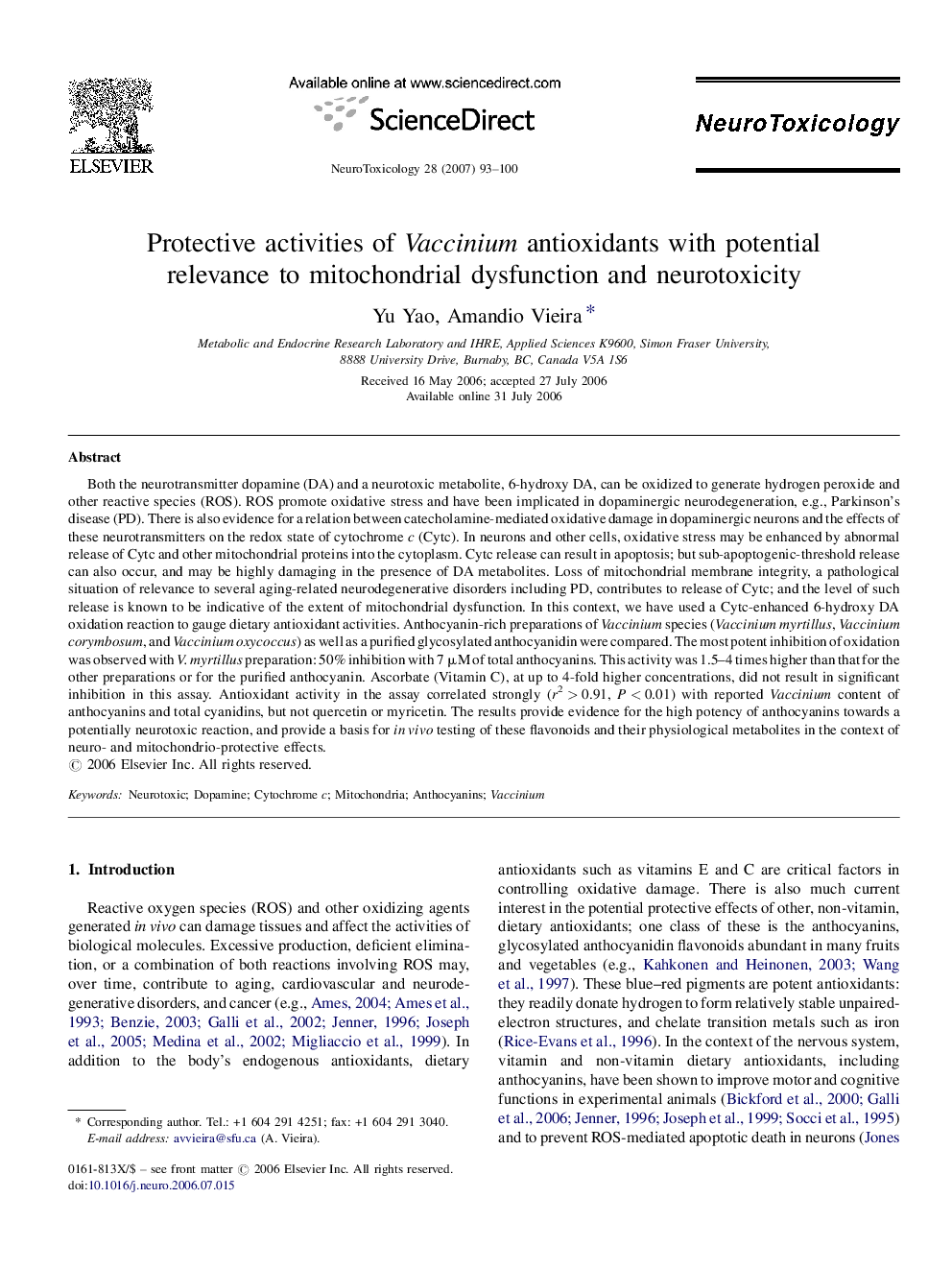| Article ID | Journal | Published Year | Pages | File Type |
|---|---|---|---|---|
| 2590498 | NeuroToxicology | 2007 | 8 Pages |
Both the neurotransmitter dopamine (DA) and a neurotoxic metabolite, 6-hydroxy DA, can be oxidized to generate hydrogen peroxide and other reactive species (ROS). ROS promote oxidative stress and have been implicated in dopaminergic neurodegeneration, e.g., Parkinson's disease (PD). There is also evidence for a relation between catecholamine-mediated oxidative damage in dopaminergic neurons and the effects of these neurotransmitters on the redox state of cytochrome c (Cytc). In neurons and other cells, oxidative stress may be enhanced by abnormal release of Cytc and other mitochondrial proteins into the cytoplasm. Cytc release can result in apoptosis; but sub-apoptogenic-threshold release can also occur, and may be highly damaging in the presence of DA metabolites. Loss of mitochondrial membrane integrity, a pathological situation of relevance to several aging-related neurodegenerative disorders including PD, contributes to release of Cytc; and the level of such release is known to be indicative of the extent of mitochondrial dysfunction. In this context, we have used a Cytc-enhanced 6-hydroxy DA oxidation reaction to gauge dietary antioxidant activities. Anthocyanin-rich preparations of Vaccinium species (Vaccinium myrtillus, Vaccinium corymbosum, and Vaccinium oxycoccus) as well as a purified glycosylated anthocyanidin were compared. The most potent inhibition of oxidation was observed with V. myrtillus preparation: 50% inhibition with 7 μM of total anthocyanins. This activity was 1.5–4 times higher than that for the other preparations or for the purified anthocyanin. Ascorbate (Vitamin C), at up to 4-fold higher concentrations, did not result in significant inhibition in this assay. Antioxidant activity in the assay correlated strongly (r2 > 0.91, P < 0.01) with reported Vaccinium content of anthocyanins and total cyanidins, but not quercetin or myricetin. The results provide evidence for the high potency of anthocyanins towards a potentially neurotoxic reaction, and provide a basis for in vivo testing of these flavonoids and their physiological metabolites in the context of neuro- and mitochondrio-protective effects.
